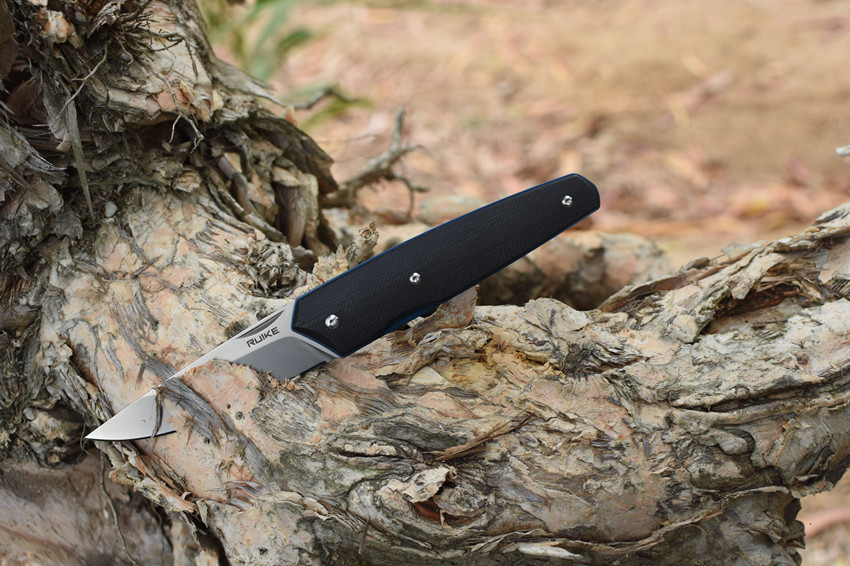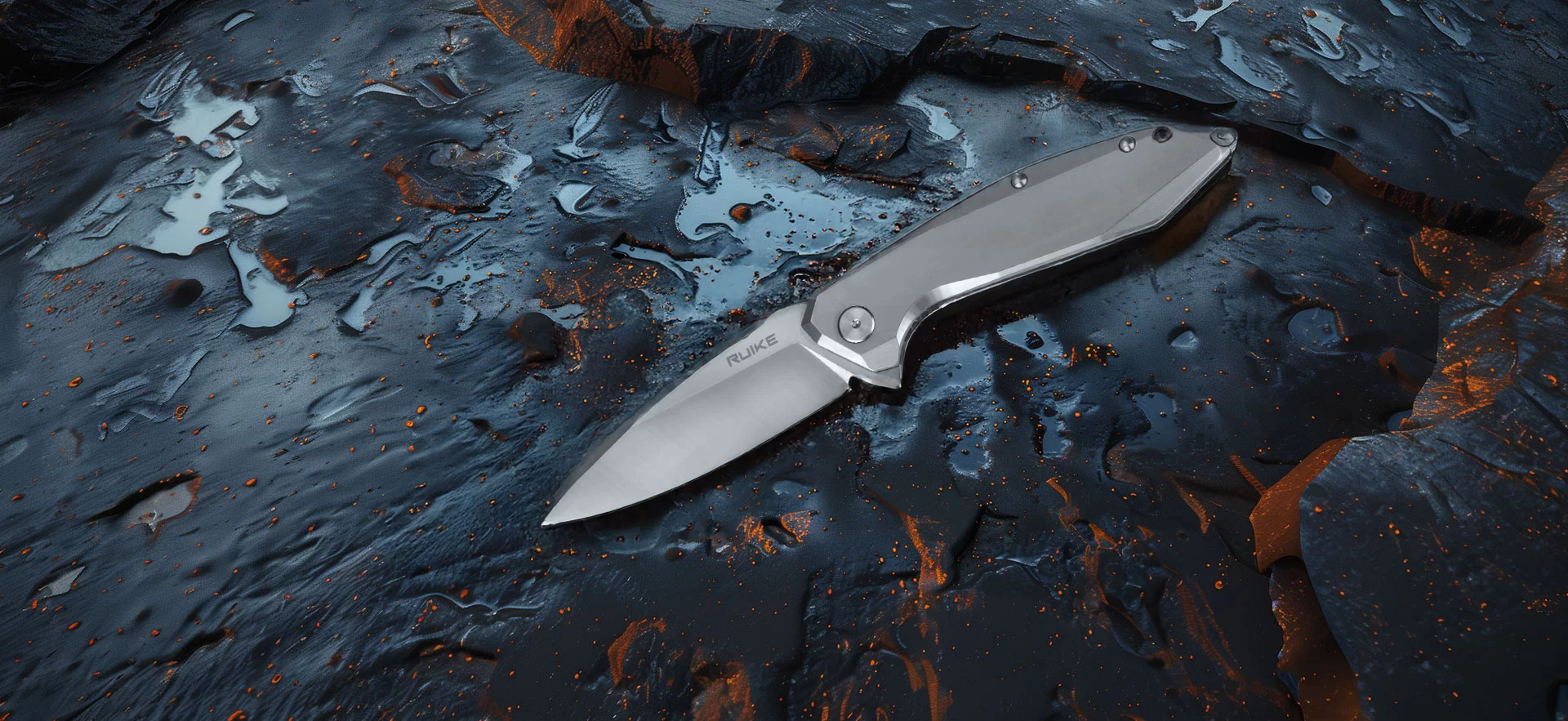
When it comes to knives, whether you're a seasoned chef, an outdoor enthusiast, or someone who appreciates quality tools for everyday tasks, the design of your knife plays a pivotal role in your overall experience. Ergonomic design in knives isn't just about aesthetics; it's about creating a tool that feels like a natural extension of your hand, enhancing both comfort and performance. In this blog post, we'll delve into how ergonomic design principles are seamlessly integrated into knife handles and shapes to provide superior grip, reduce hand fatigue, and improve overall handling for users of all levels.
Ergonomics, in the context of knife design, focuses on tailoring the tool to fit the user's hand perfectly. This involves understanding the natural movements and pressures exerted during knife use and designing the knife to complement these actions. The goal is to minimize strain, prevent injury, and maximize efficiency.
The handle is the most critical part of a knife regarding ergonomics. An ergonomically designed handle typically features a shape that conforms to the natural curvature of the hand. This means avoiding sharp edges or awkward angles that can cause discomfort during prolonged use. Instead, curves and contours guide your fingers and palm into a natural and secure grip.
Example: A well-designed chef’s knife handle often includes a slight curve at the top to cradle the thumb, providing better control and reducing the effort needed to hold the knife steady.
The materials used in knife handles significantly impact grip and comfort. Ergonomic designs often incorporate materials that offer both durability and a tactile surface to prevent slipping, even when hands are wet or oily. Common materials include textured plastics, rubberized grips, or natural woods with treated surfaces.
Example: Non-slip rubber inserts or textured patterns can enhance grip, ensuring the knife remains firmly in your hand during intensive chopping or slicing tasks.
Balance is a subtle yet crucial aspect of ergonomic knife design. A well-balanced knife feels lighter and more responsive, reducing the strain on your hand and wrist. Proper weight distribution ensures that the knife doesn't feel top-heavy or too bulky, allowing for smoother and more controlled movements.
Example: A knife with the center of gravity closer to the handle requires less force to maneuver, making it ideal for both detailed cutting and heavy-duty chopping.
Ergonomic knives often include features that guide proper finger placement, enhancing safety and efficiency. This can include finger grooves or bolster designs that create a natural space for your fingers to rest, keeping them away from the blade during use.
Example: The bolster, the thick junction between the handle and the blade, not only provides structural integrity but also helps position the hand correctly, preventing accidental slips onto the blade.

An ergonomic handle ensures a secure and comfortable grip, allowing for precise cuts and controlled movements. This is particularly beneficial for intricate tasks like filleting fish or fine dicing vegetables, where control is paramount.
For tasks that require prolonged use of a knife, such as preparing large meals or engaging in extensive outdoor activities, ergonomic designs help minimize muscle fatigue and discomfort. By distributing pressure evenly and aligning with natural hand positions, these knives allow for longer use without strain.
Ergonomically designed knives offer better handling, which translates to increased precision. Whether you're a professional chef or a home cook, the ability to make accurate cuts with minimal effort enhances your overall cooking experience and results.
Casual users benefit greatly from ergonomic knives through improved safety and ease of use. Tasks like chopping vegetables, slicing bread, or carving meat become more enjoyable and less taxing on the hands, making meal preparation more efficient.
For outdoor enthusiasts, an ergonomic knife can make a significant difference during extended use, such as camping, hiking, or fishing. A comfortable grip and balanced design ensure that the knife remains reliable and easy to handle, even in challenging conditions. To explore a range of knives specifically designed for outdoor adventures, visit Ruike Knives' Outdoor Knives Collection, where durability and ergonomic design meet the demands of the great outdoors.
Professional chefs require knives that offer exceptional control and endurance. Ergonomically designed chef’s knives provide the precision needed for high-volume and repetitive tasks, reducing the risk of hand fatigue during long hours in the kitchen.
For professionals who rely on knives for their trade—such as hunters, fishermen, and woodworkers—ergonomic designs enhance performance and safety. A well-balanced, comfortable knife ensures that tasks are completed efficiently and with greater accuracy. If you're a hunter seeking tools that combine ergonomic design with rugged durability, explore Ruike Knives' Hunting Knives Collection, specifically crafted to meet the unique demands of hunting professionals.

Consider the primary use of the knife before making a selection. Different tasks may require specific handle designs or blade shapes, so understanding your needs will guide you toward the most suitable ergonomic features.
Whenever possible, handle the knife in person to assess its comfort and balance. Pay attention to how the handle fits your hand and whether the weight distribution feels natural during use.
Ergonomically designed knives should be maintained properly to ensure their longevity and performance. Regular cleaning, proper storage, and timely sharpening will keep your knife in optimal condition, preserving its ergonomic benefits.
Ergonomic design in knives represents the intersection of functionality and human-centric design, ensuring that tools are not only effective but also comfortable and safe to use. As technology and materials continue to advance, we can expect even more innovative ergonomic features that cater to the diverse needs of knife users worldwide. Whether you're a casual user or a professional, investing in an ergonomically designed knife can greatly enhance your handling experience, making every cut smoother and every task more enjoyable.
Embracing ergonomic design principles in knives is a testament to the thoughtful craftsmanship that prioritizes the user’s comfort and performance. As you select your next knife, consider the ergonomic features that will support your needs, ensuring a seamless blend of comfort and efficiency in every use. For personalized recommendations or to learn more about ergonomic knife options, feel free to reach out to the experts at Ruike Knives through their Contact Page. They’ll help you find the perfect tool to elevate your cutting experience.